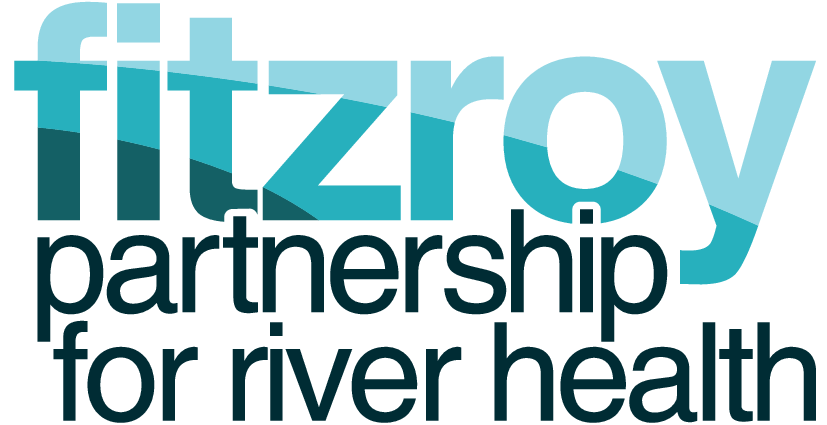Analysis and summary of Fitzroy Basin Estuary Zone trends 2010-2014
Four years on from its commencement, the Fitzroy Partnership for River Health can now begin to look at trends in the condition of catchments and waterways within the Fitzroy Basin. From flooding rains to desperate drought in various parts of the catchment, there are a significant range of factors influencing the health of the Basin’s ecosystems and waterways.
To date the Partnership has reported on eleven catchments, the estuary and marine zone, and over the first four years, the estuary zone has shown an improvement in health indicators and its overall condition.
Overview
The Fitzroy River Estuary begins at the Fitzroy River barrage at Rockhampton and winds its way for 56 kilometres before reaching Keppel Bay. The estuary includes inner Keppel Bay, extending in an arc from Station Point on Curtis Island to Cattle Point, south of Keppel Sands township.
The Estuary has a five metre tidal range and includes Port Alma, Raglan Creek, Connor Creek and Balaclava Island. It extends to the Narrows in the south. The estuary supports healthy recreational and commercial fishing industries and has been developed with port facilities and salt works. The Estuary receives urban storm water run-off from the City of Rockhampton and is a discharge point for environmentally regulated industries such as abattoirs, sewage treatment plants and landfill and also receives diffuse run-off from agricultural sources. There is also a quarry within the local catchment.
The 11 freshwater catchments of the Fitzroy Basin (which is the largest seaward-draining Basin in Australia flowing to the Great Barrier Reef) all flow into the Fitzroy River and Estuary zone.
Trends and condition
The Fitzroy River estuary’s long term condition has been steadily improving over the last four years since reporting began, going from a C Grade for the 2010-11 and 2011-12 years to a B Grade for the 2012-13 and 2013-14 years. This is in part due to the improving trend in Barramundi recruitment, physical- chemical indicators (turbidity and dissolved oxygen) and most nutrient indicators (except oxidised nitrogen) in the Estuary. Turbidity, total phosphorous and ammonia indicators all improved their individual grades across the four years from a C to a B Grade.
Barramundi recruitment
Barramundi recruitment is influenced by rainfall and river flows, climate conditions, flow timing, predation and food availability. Barramundi Scores and Grades in the Estuary fluctuated dramatically across the 4 years of reporting, from a D Grade in 2010-11, to an E Grade in 2011-12 and a peak of a C Grade in 2013-14.
Spawning usually occurs from October to January around the full and new moons. Above average rainfall in the wet season and strong La Nina patterns usually produce good recruitment of Barramundi. An example case of this is the Barramundi recruitment which increased to a C Grade in 2013-14 following major flooding in 4 catchments (including Fitzroy River that peaked at 17.67m at The Gap) of the Basin in the previous year of 2012-13.
Whilst major flooding occurred across nine of the Basin’s 11 Catchments (including the Fitzroy River at 20.83m at The Gap) in the 2010-11 wet season, this was not followed by good recruitment of Barramundi as would normally be expected.
A report on Barramundi Recruitment in 2014 (Info Fish, Crystal bowl and Gladfish http://crystal-bowl.com.au/wp-content/uploads/2014/12/Barramundi-recruitment-2014.pdf) suggests that there were good climate and flow conditions for Barramundi recruitment in proceeding years of 2008-10, however the D Grade suggests that other factors have influenced the timing window of recruitment. The recruitment of Barramundi dropped even further to an E Grade in 2011-12, which may have been influenced by the Minor flooding and average rainfall across the basin that produced lower flows in the Estuary. The Barramundi Recruitment 2014 report also identified that 2012 did not have flow timing and climate conditions that were ideal/suitable for recruitment.
Turbidity:
Turbidity in the Estuary is influenced by rainfall, flooding, ground cover, geology and land use in the Basin’s catchments (and Estuary Catchment) and daily tidal flow. During the wet season the turbidity of the Estuary increases as sediment is carried in fresh water flows from the Basin’s catchments. Large Spring tides are a big influencing factor on turbidity levels in the dry season in the Estuary; reduced or no fresh water flows mean that tidal inflow and outflow have a greater capacity to disturb and resuspend fine sediments deposited in the mouth and channel of the Estuary. Neap tides in the dry season or times of low freshwater flow in the Estuary are less turbid than Spring tides.
Turbidity in the Estuary improved across the four years of data, increasing from a C Grade (2010-11 and 2011-12) to a B Grade (2012-13 and 2013-14). This increase in Grade is likely to be due to the decrease in rainfall and flooding across the Catchments in the Basin from 2010-11 to 2013-14, thus reduced sediment loads flowing through to the Estuary. For example, Major flooding occurred across nine of the eleven Catchments in 2010-11 (Fitzroy River peaked at 20.83m at Yaamba), and rainfall was far higher (ranging between 1177mm and 1709mm across catchments) than the long-term average. This is likely to have strongly influenced Turbidity to have a lower overall C Grade for the 2010-11 year compared to 2013-14, which had a B Grade overall Turbidity result for below average rainfall across the Fitzroy Basin (379mm in Nogoa Catchment and 729mm in Fitzroy Catchment) and no Major flooding. Although Ground Cover across the Basin’s catchments had a slight decreasing trend from 2010-11 to 2013-14, this has not impacted greatly upon turbidity results in the Estuary as would be expected and is likely to be due to the decrease in rainfall across the Basin.
Turbidity (cloudiness or murkiness of water) can be caused by sediment in the water and growth of phytoplankton. Agriculture is the largest land use in the Basin and therefore has a big influence on sediment loads, however mining, urban areas and other land uses also impact upon sediment loads and water quality. In the Fitzroy Basin, fifty percent of the sediment delivered across our region is estimated to come from gully and hillslope erosion processes on grazing lands. An interactive map on sediment loads from Agricultural sources in each of the 11 catchments of the Basin is available on the FBA’s Water Quality Improvement Plan (WQIP) website; it is worth noting that the modelling behind this interactive map estimates the Fitzroy Catchment to have delivered 42% of the total anthropogenic load of sediment for the Fitzroy Basin.
Nutrients:
Nutrients in the Estuary are influenced by rainfall, flooding, ground cover and land use in the Basin’s catchments and locally from the catchments flowing directly into the Estuary. All Nutrient indicators, except for Oxidised Nitrogen, display an increasing trend in Grade and Score across the 4 years of reporting. For example, Ammonia and Total Phosphorous results increased from a C Grade in 2010-11 (year with major flooding and well above average rainfall) to a B Grade in 2013-14. This increasing trend may be due to the reduced rainfall average and associated lower flooding levels across the Basin from 2010-11 to 2013-14. Reduced rainfall and floods often means reduced sediment loads (turbidity) coming into the Estuary system from fresh water flows in the wet season. This is to be expected as sediments carry nutrients with them, where they can become available for biological use in the water column. Oxidised Nitrogen results show a decreasing trend.
In wet years, nutrient levels in the estuary are more greatly dictated by upstream nutrient loads carried by floodwaters. In dry years, nutrients accumulate in the estuary zone to a greater extent than they would in wet years due in part to local inputs from urban activities, sewerage treatment plants and abattoirs that are not flushed out to the marine zone.
There are many localised point sources of nutrients in the Estuary, however some of these industries are of interest because they are likely to release higher levels of nutrients than other sources due to the nature of their industry and the waste products they generate, process or treat (for example: sewage treatment plants and abattoirs). National Pollutant Inventory (NPI) data available online was collated for these industries across each of the 4 years from 2010-11 to 2013-14 for Total Ammonia, Total Nitrogen and Total Phosphorous (refer to Table 1 below). This data was then compared against the Partnership’s Report Card trend data for these three nutrients in the Estuary.
Table 1 below shows that Total Nitrogen, Total Ammonia and Total Phosphorous released to Estuary waters had an increasing trend across the four years (1.7 fold increase for Nitrogen, 5 fold increase for Ammonia and a 1.3 fold increase for Phosphorous). The increase in Total Nitrogen, Ammonia and Phosphorous released to estuary waters is likely to be due to the increasing human population in Rockhampton and subsequent increasing levels of sewage being treated, and a possible increase in the total number of animals slaughtered and processed over the 4 year period.
Partnership trend data for the Estuary across the four years display:
- Total Nitrogen – An improving trend whilst remaining a B Grade (or interpreted in another way, decreasing levels of Total Nitrogen);
- Ammonia – An improving trend from a C to a B grade and retaining a B Grade for 3 years for Ammonia (or interpreted in another way, decreasing levels of Ammonia); and
- Total Phosphorous – A slow improving trend from a C to a B Grade and retained a C Grade for 3 years (or interpreted in another way, decreasing levels of Total Phosphorous).
These increasing point source discharges and improving Grades for each of these nutrients in the Estuary suggest that the influences to nutrient level changes in the Estuary are complex and not easily understood. It appears that upstream land uses (and both their diffuse and point sources of nutrients) in the greater Fitzroy Basin, and diffuse urban run-off sources from the urban centre of Rockhampton, may have a large influence on nutrient levels in the Estuary.
Further information and trends on agricultural sources of particulate nitrogen and phosphorous in the Fitzroy Basin is available via an interactive map for the Water Quality Improvement Plan ( WQIP ) and other sources of pollutant loads are also discussed.
TABLE 1 : YEARLY NUTRIENT DISCHARGE TO SITE FROM POINT SOURCES IN THE FITZROY RIVER ESTUARY (SEWAGE TREATMENT PLANTS & ABATTOIRS ONLY)
| Year | Nutrient | Air (kg) | Land (kg) | Water (kg) | Total (kg) |
| 2010-11 | Total Ammonia | 213,016 | 19,320 | 232,336 | |
| Total Nitrogen | 84,275 | 84,275 | |||
| Total Phosphorus | 38,615 | 38,615 | |||
| 2011-12 | Total Ammonia | 205,310 | 46,755 | 252,065 | |
| Total Nitrogen | 112,299 | 112,299 | |||
| Total Phosphorus | 44,058 | 44,058 | |||
| 2012-13 | Total Ammonia | 17,355 | 85,419 | 103,326 | 206,100 |
| Total Nitrogen | 129,233 | 129,233 | |||
| Total Phosphorus | 38,882 | 38,882 | |||
| 2013-14 | Total Ammonia | 14,345 | 82,345 | 104,196 | 200,886 |
| Total Nitrogen | 144,957 | 144,957 | |||
| Total Phosphorus | 51,335 | 51,335 | |||
| 4 Year Grand total | Total Ammonia | 450,026 | 167,764 | 273,597 | 891,387 |
| Total Nitrogen | 470,764 | 470,764 | |||
| Total Phosphorous | 172,890 | 172,890 |
Note: Data collated from NPI annual data


